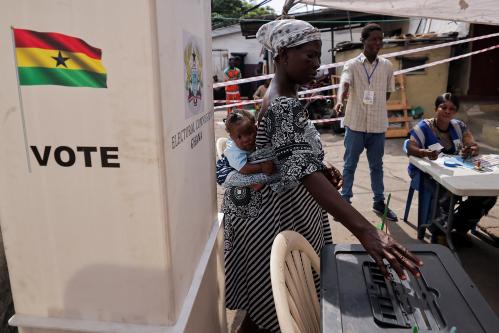Political repression, conflicts, drought and economic instability have resulted in twin humanitarian crises in the horn of Africa: widespread famine and an influx of refugees and internally displaced persons. Much attention has been directed at the famine situation which has received overwhelming international response. However, there has been much less effort to address the refugee and internally displaced persons crisis. As of last month, it is estimated that there are 800,000 refugees and approximately 1.46 million internally displaced persons across Kenya, Ethiopia, Somalia and Djibouti. Already the refugee camps that serve as “safe havens” are over stretched due to congestion and lack of sufficient services, such as food, water and security.
The influx of refugees is imposing substantial environmental, social and economic costs to the host nations. In Ethiopia, the residents of Dollo Ado— the Gerimero community, who claim to be the first settlers of Dollo Ado— are complaining about the rising cost of living and insecurity associated with the influx of refugees. The natives fear that some of the refugees are members of terrorist groups such as Al Shabaab. In other cases, the presence of large numbers of refugees is raising the potential for conflicts as the natives and refugees fight for scarce resources.
As large flows of refugees settle in the interior of these countries, they begin to impact the cost of housing and commodities. For example, the exodus of Somalis to Kenya has resulted in significant population changes in some of Kenya’s cities. In some parts of Nairobi such as Eastleigh, the Somali population has increased so much that the area is now commonly referred to as “Small Mogadishu”.
The capacity of these countries to respond to the refugee and internally displaced people crisis is severely constrained because they are also facing difficult economic times. Rising food and fuel prices have led to soaring inflation of 16.7 percent in Kenya, 39.2 percent in Ethiopia and 5.2 percent in Djibouti. With the widespread drought across the region, there has been increased demand for imported food. Simultaneously, these economies have faced a rapid depreciation in their currencies, which further increases the cost of food and medical supplies.
With limited instruments to deal with the economic crisis, attempts to stabilize these economies have resulted in yet another problem of rising interest rates. These countries are grappling with the unholy trinity of inflation, rising interest rates and unstable exchange rates. All of these issues are adversely hurting economic growth in Africa’s horn. Unemployment, especially among youth, is compounding the economic situation, which is only exacerbated by the influx of refugees.
The refugee and displaced persons crisis is likely to continue as the drought persists and the political crisis in Somalia remains unresolved. Food insecurity in Somalia is projected to last until December. And although food security in Kenya is projected to improve in the next few months, Kenyan authorities have indicated that the country will not be able to cope with additional refugees. Kenya’s President Mwai Kibaki has proposed that refugee camps be established in Somalia rather than Kenya as a way to control the influx of Somali refugees.
While the capacity of the host countries to absorb all the refugees is constrained by the ailing economic situations, a longer term and economically viable solution to the refugee problem is of urgent necessity. Refugees arrive in the camps with nothing and it is costly for host countries and aid givers in the long term to continue providing food, shelter and clothing. However, skilled and experienced refugees who have managed to move into these countries’ interior regions have been able to engage in various economic activities. Therefore, there is a possibility then that skills can be harnessed in these camps and aid can be channeled to engage refugees in economic activity such as building infrastructure in the affected cities and increase staffing in the government provided services. This is more beneficial to the refugees and at the same time to natives of affected cities in the longer term. A lot of refugees would like to go back to their countries when peace is restored, but not without resources or some gained skills that would enable them start life again. However, it is important to note that the permanent solution to refugee and internally displaced persons problems lies squarely on the ability of African countries to tackle the root causes, which include corruption, greed and a lack of true democracy.
The Brookings Institution is committed to quality, independence, and impact.
We are supported by a diverse array of funders. In line with our values and policies, each Brookings publication represents the sole views of its author(s).



Commentary
Op-edAn Economic Perspective on the Refugee Crisis in Africa’s Horn
September 12, 2011